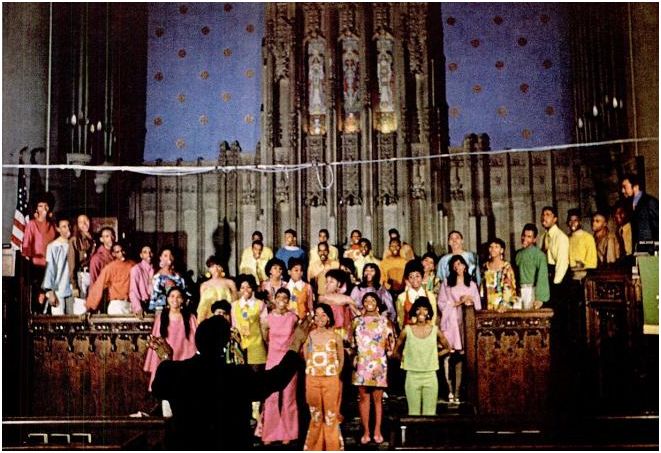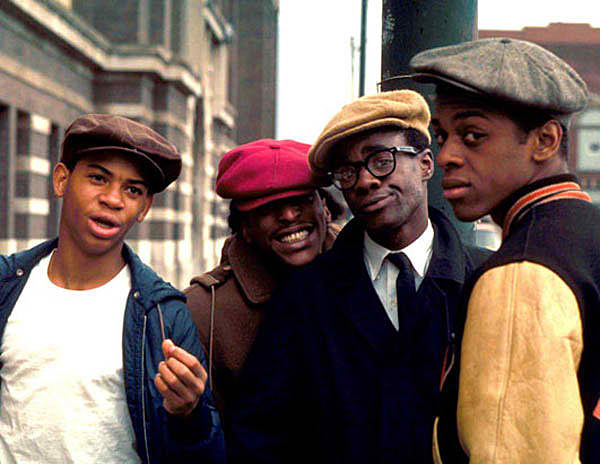South Side Chicago
-
The Parishioner: St. Laurence’s Last Days.
This Summer, on the South Side of Chicago, St. Laurence’s is finally coming down. The grounds, which included a rectory and a school, already suffered through a devastating fire and neglect. the Archdiocese of Chicago closed the church in 2002. The former parishioner in the above photo came to pay his respects, fittingly, on…
-
Shacks and Shanties: a temporary art project
The “Shacks & Shanties” project is a South Side Chicago installation initiative organized by Faheem Majeed. Shacks were constructed as platforms for artistic performances and installations. I attended one such installation/performance, titled “Ghana Must Go” after the infamous plaid patterned tote bags that are so prevalent in West Africa. I talked to Faheem Wajeed as…
-
Donald Jenkins and the Delighters (and their Basement Music Revolution)
I’m not sure what exactly is revolutionary about this record, titled “Music Revolution” and released by Donald Jenkins and the Delighters in 1975, but it sure is lovely. It’s what I like to call Basement Soul. It also reminds me of how much I miss skin tight harmonies. A local Chicago record through and through…
-
a Chicago Be-In at Promontory Point, 1967
What’s a Be-In? Check the video below from the Lincoln Park Be-In for more background on the celebration of “Turning on and Tuning In”. Around the time of Chicago’s storied Blizzard of 1967 which dumped 23 inches of snow over the course of about 35 hours, out in San Francisco, the first “Human Be-in”…
-
Growing Home: reclaiming the earth beneath the concrete.
I’m itching for spring. Here in Chicago, the weather has been mercifully mild… Visions of a vegetable and herb garden in my backyard dance in my head. I am swooning over Kale and Basil! But dreams of building up my South Side neighborhood (through green jobs, better food, and economic empowerment) dance, too. I’m a…
-
Opportunity Please Knock Chorus: oscar brown, jr.’s collaboration with the blackstone rangers
In 1967, members of the Blackstone Rangers, a notorious Gang in Chicago, collaborated with singer/composer/playwright/activist Oscar Brown Jr. to create a Musical Revue called “Opportunity Please Knock”. About eight thousand people went to the show during the first weeks of performance (at Chicago’s First Presbyterian Church). Photos in this post are from that first run.…
-
Tomorrow, we groove.
Below, one of the grooves I’ll spin: “Love so Strong” from the Lovelites (pictured, left). Fronted by Patti Hamilton, the group of ladies from Chicago’s South Side recorded a gaggle of groovin’ steppers (including one of their biggest hits, “My Conscience”). The Lovelites are, in my humble opinion, one of the most consistent female groups…
-
Alfresco Dining at Harold’s Chicken
During these last strains of summer, I find myself seeking out ways to absorb the outdoor life. Generally speaking, there aren’t a whole lot of opportunities for alfresco dining on the South Side of Chicago. Imagine my surprise when I passed by this Harold’s Chicken (a Chicago tradition) at 64th and Cottage Grove. Get it…
-
Gouster or Ivy Leaguer?
Today, it’s a question of whether your pants are sagging or not (as far as I’m concerned). In the Sixties, on the South and West Sides of Chicago, the male clothing signifier was whether you were a Gouster or an Ivy Leaguer. A former co-worker who I guess would be classified as a Gouster now, but was an…





